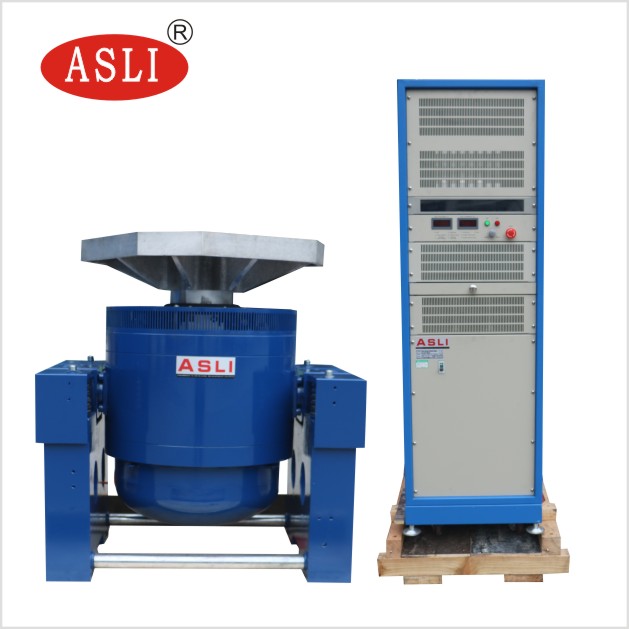In the realms of electronics and defense, the robustness and longevity of components under stress are non-negotiable. Electrodynamic shakers play a crucial role in this context, offering a sophisticated means to replicate and study the effects of vibrations on various assemblies and equipment. These devices leverage electromagnetic technology to administer precise, repeatable vibrational forces, thereby mimicking the conditions that products might face during transportation, deployment, or everyday use. As industries increasingly demand higher standards of durability and reliability, one might ponder how these shakers are evolving to meet such stringent testing requirements, and what innovations lie on the horizon to enhance their efficacy.

ASLI Electromagnetic Shaker Vibration Test Bench ES-3 High-Precision Testing Equipment
Electrodynamic shakers play a pivotal role in the field of vibration testing, simulating real-world conditions to ensure product durability and reliability.
These devices operate on electrodynamic principles, creating vibrations through a combination of electromagnetic fields and mechanical systems. Shaker calibration is essential, as it allows precise control over the magnitude and frequency of vibrations applied during testing.
This calibration ensures that each test can be replicated accurately, providing reliable data for evaluating product performance under various stress conditions. By mastering the intricacies of electrodynamic shakers, including their calibration, engineers can manipulate test conditions to mimic operational environments, leading to the development of products that are robust and dependable in real-world applications.

ASLI Electrodynamic High Frequency Vibration Tester | High-Precision Vibration Testing Equipment
Numerous applications in the electronics industry heavily rely on electrodynamic shakers for vibration testing, crucial for ensuring the robustness of electronic devices. These shakers help in assessing circuit reliability and enhancing component durability. By simulating real-world stress conditions, manufacturers can identify potential failures before products reach consumers, thereby maintaining control over product quality and lifecycle.
| Device Type | Test Objective | Benefit |
|---|---|---|
| Smartphones | Endurance to dropping | Increases component durability |
| Laptops | Resistance to movement | Enhances circuit reliability |
| Wearables | Stability during wear | Ensures functionality |
| Circuit Boards | Tolerance to shocks | Prevents premature failures |
| Automotive Sensors | Operation under stress | Guarantees safety and reliability |
This methodical approach allows for precise control over product resilience in the demanding electronics market.
While electrodynamic shakers play a significant role in the electronics industry, their importance extends into the defense sector as well.
These devices are pivotal in meeting stringent military standards, ensuring that defense equipment maintains high vibration reliability under harsh conditions. The precise simulation of real-world stresses helps in evaluating the durability and operational readiness of various military hardware, from vehicles to weaponry.
This testing confirms that systems can withstand the rigorous vibrations encountered during transport, deployment, and use. By adhering to established military testing protocols, electrodynamic shakers provide a controlled, repeatable environment for critical vibration testing, thereby enhancing the safety and functionality of defense technology in field operations.
This rigorous validation is essential for mission success and operational safety.
Although hydraulic shakers are commonly used for vibration testing, electrodynamic shakers offer several advantages that enhance test precision and efficiency.
Electrodynamic systems are renowned for their cost efficiency and reduced maintenance requirements. Unlike hydraulic shakers, which can be costly due to the high price of hydraulic fluids and the need for frequent replacements, electrodynamic shakers utilize electromagnetic forces, minimizing the need for consumables and thereby lowering ongoing expenses.
Additionally, the maintenance process is less cumbersome, mainly involving periodic servicing of electrical components rather than dealing with fluid leaks or contamination issues. This reliability and ease of maintenance not only ensure greater control over testing environments but also significantly reduce downtime, boosting overall productivity in rigorous test schedules.
Optimal performance of electrodynamic shakers in vibration testing hinges on precise setup and calibration. Achieving this requires understanding and implementing advanced calibration techniques and closely monitoring performance metrics.
Here are key steps to ensure effective setup:
Having established the importance of precise setup and calibration for electrodynamic shakers, it is equally important to consider how emerging technologies and methodologies will shape the future of vibration testing.
As industries lean towards more sophisticated and automated systems, the integration of machine learning and automation becomes pivotal. These technologies promise to enhance the precision of vibration tests by predicting and adjusting parameters in real-time, leading to more reliable and efficient outcomes.
Automation integration also streamlines processes, reducing human error and increasing productivity.
As we move forward, these advancements will not only refine the capabilities of electrodynamic shakers but also expand their applications in electronics and defense industries, ensuring stringent compliance with evolving testing standards.
The typical lifespan of an electrodynamic shaker varies, influenced by factors such as usage frequency, maintenance quality, and environmental conditions. Shaker durability is crucial for ensuring long-term, reliable performance in testing applications.
Like a tightly held reign, safety in operating electrodynamic shakers hinges on thorough operator training and awareness of electrical hazards to prevent accidents, ensuring a controlled environment for precision testing.
Temperature influence significantly affects electrodynamic shaker performance stability. Elevated temperatures can reduce system efficiency, potentially causing component malfunctions and deviations in vibration test results, necessitating stringent environmental control for optimal operation.
Yes, electrodynamic shakers can be utilized for testing non-electronic materials, provided there is compatibility between the material properties and the shaker's specifications, ensuring precise control over vibration inputs for diverse application needs.
Maintaining the heartbeat of precision, electrodynamic shakers require regular maintenance including periodic shaker calibration and checks determined by maintenance frequency, ensuring operational excellence and control over performance in rigorous testing environments.
In conclusion, electrodynamic shakers represent a cornerstone in the advancement of reliability testing within the electronics and defense industries. Their precise control over vibration parameters not only ensures product durability but also accelerates the development of robust technologies. For instance, the successful deployment of smartphone prototypes that undergo rigorous pre-market testing using these shakers exemplifies their indispensable role. As the integration of automation and machine learning continues, the potential for further enhancing testing precision is immense.
Founded in 1988, ASLI (China) Test Equipment Co., Ltd. produces high-quality inspection instruments and testing equipment, including temperature and humidity chambers, aging testers, and vibration testers. Certified to international standards, ASLI serves research, quality inspection, and educational sectors worldwide, renowned for precision, reliability, and exceptional customer service.
Contact us for a free quote of your ideal electrodynamic shaker!

